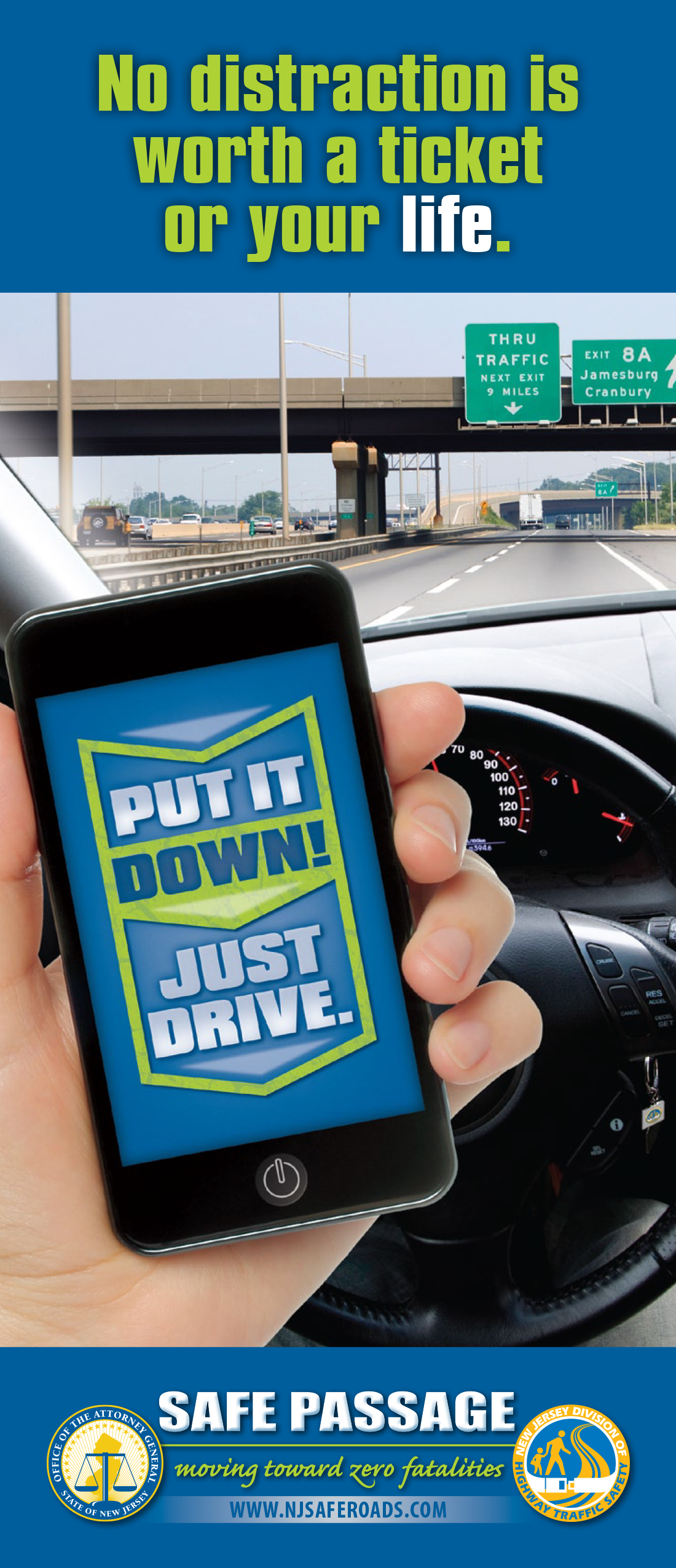Put your phone away or get ready to pay.
There are many rules to remember when you get behind the wheel, like always wearing a seat belt, driving sober, and obeying the posted speed limit. There is one thing you should add to that list: never use your phone while you are behind the wheel.
There were 37,461 lives lost on America’s roadways in 2016, and almost 10 percent of those fatalities were distraction-related. When we think of distracted driving, the first thing that comes to mind is texting while behind the wheel; however, actions like putting on makeup or eating can be just as deadly. However, as a driver, your priority should only be the road in front of you.
That’s why high-visibility enforcement campaigns like U Drive. U Text. U Pay are so important. Law enforcement officers will have an increased presence on America’s roads, and will be on high alert to catch distracted drivers and enforce distracted-driving laws. Remember: U Drive. U Text. U Pay.
As a driver, it’s your responsibility to keep yourself, your passengers, and those around you safe on the road. The best way for you to protect everyone is to keep both hands on the wheel, and your eyes and concentration on the road – not an electronic device. If you need to send a text, ask your passenger to be your “designated texter,” or pull off in a safe location to use your phone. The consequences of distracted driving can be disastrous and cost you a pretty penny.
While the problem spans all age ranges, texting and driving has become an especially problematic trend among millennials. According to NHTSA, young drivers 16 to 24 years old have been observed using handheld electronic devices while driving at higher rates than older drivers since 2007.
In 2016, there were 3,450 people killed and 391,000 people injured because of this deadly behavior. Clearly, the consequences of texting while driving can be severe; however, prevention is simple. Start with your own behavior; don’t use your phone or anything else that can be distracting while behind the wheel. Spread the message. If you see someone distracted behind the wheel, share the statistics, dangers, and your concerns. The best messengers for teens are their peers, so encourage your teen to share the stats with their friends if they see them engaging in unsafe behavior. Tell everyone: U Drive. U Text. U Pay.
Distracted Driving Key Facts and Statistics
Nationwide, the number of people killed in distraction-affected crashes decreased slightly from 3,328 in 2012 to 3,179 in 2014. An estimated 431,000 people were injured in motor vehicle crashes involving a distracted driver.
In New Jersey, driver inattention has been a major contributing cause in over 800,000 motor vehicle crashes from 2010 to 2014.
As of December 2015, 156.7 billion text messages were sent in the US (includes PR, the Territories, and Guam) every month.
10% of all drivers under the age of 20 involved in fatal crashes were reported as distracted at the time of the crash. This age group has the largest proportion of drivers who were distracted.
Drivers in their 20s comprise 24 percent of drivers in all fatal crashes, but are 29 percent of the distracted drivers and 39 percent of the distracted drivers who were using cell phones in fatal crashes.
More than half of all adult cellphone owners have been on the giving or receiving end of a distracted walking encounter.
At any given daylight moment across America, approximately 542,000 drivers are using cell phones or manipulating electronic devices while driving, a number that has decrease over 18% since 2010.
Engaging in visual-manual subtasks (such as reaching for a phone, dialing and texting) associated with the use of hand-held phones and other portable devices increased the risk of getting into a crash by three times.
Sending or receiving a text takes a driver’s eyes from the road for an average of 4.6 seconds, the equivalent-at 55 mph-of driving the length of an entire football field, blind.
Headset cell phone use is not substantially safer than hand-held use.
A quarter of teens respond to a text message once or more every time they drive. 20 percent of teens and 10 percent of parents admit that they have extended multi-message text conversations while driving.
For more information, please visit www.trafficsafetymarketing.gov.




